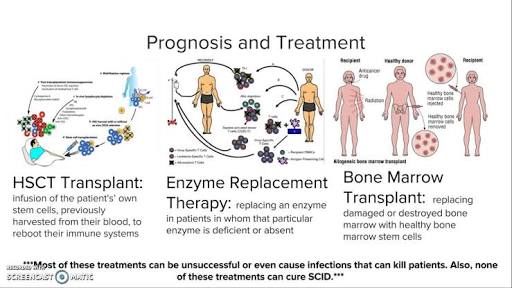SCID........The Most Deadly Primary Immune System Disorder
SCID, which fully means (Severe Combined Immunodeficiency) is a deadliest disorder of the immune system. I came across this while watching a movie which is titled everything, everything which is a story of a young woman with Severe Combined Immune Deficiency (SCID).
I was actually shocked to know there are other immune system disorders which could be so dangerous than sickle cell anemia.
General Overview
The disorder (SCID) is known to be a group of a very rare and life-threatening diseases that are usually present in infants starting from the day they were born (i.e. at birth). The disease causes the child to have very little or no immune system in which there is combined absence of T-lymphocyte and B-lymphocyte function. As a result, the child's body is unable to fight off infections. The immune system of an infected child becomes extremely susceptible to very serious infections or attacks by bacteria, virus and fungi. Hence, it is a condition which is generally considered to be the most serious of the primary immune deficiencies.
Image Credit
Those children with this kind of very rare and inherited immune system disorder become very ill with illnesses such as pneumonia, meningitis, and chickenpox and can die within the first year of their life. Although, there is hope of survival for the infected children with new advances in treatments,which makes children with SCID to be successfully treated.
Types of SCID disorder
Several types of SCID has been discovered so far with the most common type called XSCID.
XSCID: The mutated gene, that normally secretes or produces a receptor for activation signals on immune cells, is located on the X chromosome. The mutations in this gene brings about a very low T-lymphocyte and NK-lymphocyte counts, while the B-lymphocyte count is high. Despite the high number of B-lymphocytes, there is no B-lymphocyte function since the B-cells have abnormal receptors for growth factors on their cell surfaces.
Another type of the severe combined immune deficiency which is often caused by a mutation in a gene that encodes an enzyme called adenosine deaminase (ADA), is the ADA SCID. It is the second most common cause of SCID, it is actually an essential enzyme needed by all body cells to produce new DNA which also breaks down toxic metabolites that have accumulate to harmful levels that kill lymphocytes.
Babies with this type of SCID have the lowest total lymphocyte counts of all, and T, B and NK-lymphocyte counts are all very low.
Common Symptoms
Some common symptoms of SCID includes, chronic diarrhea, pneumonia, sepsis, meningitis, Failure to thrive, Recurrent respiratory, Alopecia, Hair loss, Lymphopenia, Decreased blood lymphocyte number, Skin rash, Abnormality of the dentist ion, Microcephaly, Recurrent urinary tract infections, Splenomegaly e.t.c.
NB: Each of these symptoms will be different from one infected patient to another practically based on the level of chronic affliction.
Diagnosis and treatment
It is very difficult to diagnosis SCID disorder before birth unless there have been a previous complete medical history of the family background.
However, some early diagnosis of SCID may be conducting a Blood tests which will typically reveal significantly lower-than-normal levels of T cells and a lack of germ-fighting antibodies. Even the presence of the B cells in the blood of SCID patients do a poor job of producing antibodies.
This early screening for SCID is done on every newborn via routine newborn screening and also after 6months after birth.
The most common treatment for SCID will be by treating the current infection and avoiding germs and preventing exposure to new infections.
The treatment of infections with specific antibiotic, antifungal, and antiviral agents and administration of intravenous immunoglobulin with restoration of a functional immune system is essential and required.
The most effective treatment for SCID is by the transplantation of blood-forming stem cells from the bone marrow of an uninfected healthy person. Bone marrow stem cells can live for a long time by renewing themselves as needed and also can produce a continuous supply of healthy immune cells. Early detection and treatment can result in markedly improved survival rates.
NOTE
Your observations, corrections and encouragement are highly welcome..
Remember to COMMENT, RESTEEM, FOLLOW and UPVOTE

.jpeg)
.jpeg)
Thanks for sharing this information.
You're welcome
Congratulations! This post has been upvoted from the communal account, @minnowsupport, by Smart-shaegxy from the Minnow Support Project. It's a witness project run by aggroed, ausbitbank, teamsteem, theprophet0, someguy123, neoxian, followbtcnews, and netuoso. The goal is to help Steemit grow by supporting Minnows. Please find us at the Peace, Abundance, and Liberty Network (PALnet) Discord Channel. It's a completely public and open space to all members of the Steemit community who voluntarily choose to be there.
If you would like to delegate to the Minnow Support Project you can do so by clicking on the following links: 50SP, 100SP, 250SP, 500SP, 1000SP, 5000SP.
Be sure to leave at least 50SP undelegated on your account.